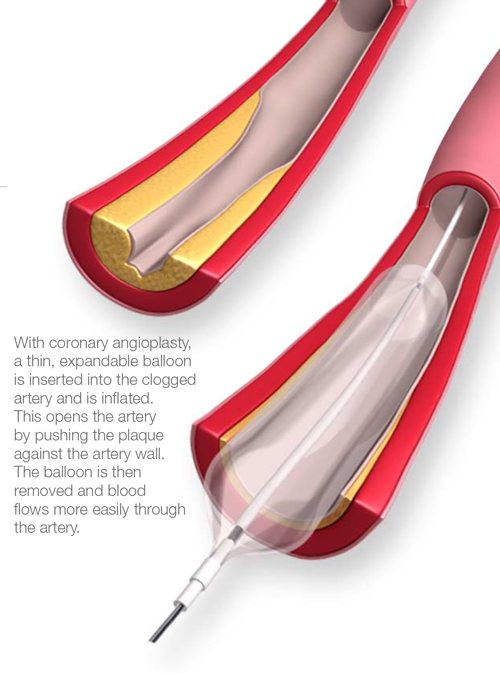What is Angioplasty?
What Is Coronary Angioplasty?
Your heart’s phentermine arteries can become blocked or narrowed from a buildup of cholesterol, cells or other substances (plaque). This can reduce blood flow to your heart and cause chest discomfort. Sometimes a blood clot can suddenly form or get worse and completely block blood flow, leading to a heart attack.
Angioplasty opens blocked arteries and restores normal blood flow to your heart muscle. It is not major surgery. It is done by threading a catheter (thin tube) through a small puncture in a leg or arm artery to the heart. The blocked artery is opened by inflating a tiny balloon in it.
Why do I need it?
People with blockages in their heart
arteries may need angioplasty if they are having lots of discomfort in their chest, or if their blockages put them at risk of a heart attack or of dying.
How is it done?
1. A doctor numbs a spot on your groin or arm and inserts a small tube (catheter) into an artery.
2. The catheter is threaded through the arterial system until it gets into a coronary (heart) artery.
3. Watching on a special X-ray screen, the doctor moves the catheter into the artery. Next, a very thin wire is threaded through the catheter and across the blockage. Over this wire, a catheter with a thin, expandable balloon on the end is passed to the blockage.


